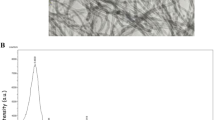Abstract
The precipitation of nanoparticles is one of the most important barriers in the industrial application of nanofluids. The common method for stabilizing nanofluids is imposing ultrasonic waves on the nanofluid before using it in the heat exchangers. The problem with this method is that after a short time, the nanoparticles start to settle. In this study, the effect of using a novel heat exchanger equipped with ultrasonic transducers on increasing the stability and heat transfer coefficient of exchanger is investigated. The results indicated that using ultrasonic transducers has increased the heat transfer coefficient as well as increasing the stability of nanofluids. The effect of ultrasonic waves on the heat transfer coefficient increased with increasing the concentration of nanofluid but reduced with increasing the flow rate. In the range covered by these results, the simultaneous use of nanofluid and ultrasonic waves could increase the heat transfer coefficient by 300%.













Similar content being viewed by others
Abbreviations
- mm :
-
Mass flow rate
- mv :
-
Volume flow rate
- Q:
-
Heat transfer
- Cp:
-
Specific heat capacity
- T f :
-
Fluid temperature
- T s :
-
Surface temperature
- LMTD:
-
Mean logarithmic temperature difference
- Dh :
-
Hydraulic diameter
- LH :
-
Length of the heat exchanger
- a:
-
Inner width of heat exchanger cross section
- b:
-
Inner height of heat exchanger cross section
- AH :
-
Internal surface area of the heat exchanger
- h:
-
Convection heat transfer coefficient
- k:
-
Thermal conductivity coefficient
- HMax :
-
Maximum head of pump
- PMax :
-
Maximum power of pump
- h* :
-
The ratio of h in the presence of ultrasonic waves to h in the absence of ultrasonic waves
- h*1 :
-
The ratio of h of nanofluid to h of water
- h* 2 :
-
The ratio of h of nanofluid in the presence of ultrasonic waves to the h of water in the absence of ultrasonic waves
- h* 3 :
-
The ratio of h of nanofluid in the presence of ultrasonic waves to the h of water in the presence of ultrasonic waves
- Re:
-
Reynolds number
- Nu:
-
Nusselt number
- P:
-
Power, W
- ρ :
-
Density, kg/m3
- φ:
-
Mass fraction
- η:
-
Power efficiency
- i:
-
Inlet
- o:
-
Outlet
- avg:
-
Average
- U:
-
Applying ultrasonic waves
- nf:
-
Nanofluid
- w:
-
Water
- H:
-
Heater
- I:
-
Absence ultrasonic waves
References
Razak N, Sani M, Azmi W (2020) Heat transfer augmentation in heat exchanger by using nanofluids and vibration excitation-a review. Int J Automot Mech Eng 17(1):7719–7733
Mitsuishi A, Sakoh M, Shimura T, Iwamoto K, Murata A, Mamori H (2020) Direct numerical simulation of convective heat transfer in a pipe with transverse vibration. Int J Heat Mass Transf 148:119048
Arasavelli SS, Konijeti R, Budda GR (2020) Effect of vibrator position and frequency on heat transfer enhancement in counter flow concentric pipe heat exchanger. World J Eng. https://doi.org/10.1108/wje-01-2020-0032
Hu J, Jing C, Zhao Y (2020) Heat transfer enhancement research of dynamical vortex generator in a solar air heater by using the piezoelectric fan array. Heat Mass Transf 56(3):825–847
Wang B-F, Zhou Q, Sun C (2020) Vibration-induced boundary-layer destabilization achieves massive heat-transport enhancement. Sci Adv 6(21):eaaz8239
Gnanavel C, Saravanan R, Chandrasekaran M (2020) Heat transfer enhancement through nano-fluids and twisted tape insert with rectangular cut on its rib in a double pipe heat exchanger. Mater Today: Proc 21:865–869
Hojjat M (2020) Nanofluids as coolant in a shell and tube heat exchanger: ANN modeling and multi-objective optimization. Appl Math Comput 365:124710
Masoud Hosseini S, Safaei MR, Estellé P, Hadi Jafarnia S (2020) Heat transfer of water-based carbon nanotube nanofluids in the shell and tube cooling heat exchangers of the gasoline product of the residue fluid catalytic cracking unit. J Therm Anal Calorim 140(1):351–362
Ding Y, Alias H, Wen D, Williams RA (2006) Heat transfer of aqueous suspensions of carbon nanotubes (CNT nanofluids). Int J Heat Mass Transf 49(1–2):240–250
Piratheepan M, Anderson T (2014) An experimental investigation of turbulent forced convection heat transfer by a multi-walled carbon-nanotube nanofluid. Int Commun Heat Mass Transf 57:286–290
Kamali R, Binesh A (2010) Numerical investigation of heat transfer enhancement using carbon nanotube-based non-Newtonian nanofluids. Int Commun Heat Mass Transf 37(8):1153–1157
Amrollahi A, Rashidi A, Lotfi R, Meibodi ME, Kashefi K (2010) Convection heat transfer of functionalized MWNT in aqueous fluids in laminar and turbulent flow at the entrance region. Int Commun Heat Mass Transf 37(6):717–723
Maré T, Halelfadl S, Sow O, Estellé P, Duret S, Bazantay F (2011) Comparison of the thermal performances of two nanofluids at low temperature in a plate heat exchanger. Exp Therm Fluid Sci 35(8):1535–1543
Esfe MH, Saedodin S, Mahian O, Wongwises S (2014) Thermophysical properties, heat transfer and pressure drop of COOH-functionalized multi walled carbon nanotubes/water nanofluids. Int Commun Heat Mass Transfer 58:176–183
Esfe MH, Saedodin S, Mahian O, Wongwises S (2014) Heat transfer characteristics and pressure drop of COOH-functionalized DWCNTs/water nanofluid in turbulent flow at low concentrations. Int J Heat Mass Transf 73:186–194
Abu-Hamdeh NH (2004) The disturbance of topsoil using ultrasonic waves. Soil Tillage Res 75(1):87–92
Elder SA (1959) Cavitation microstreaming. J Acoust Soc Am 31(1):54–64
Fogler S, Lund K (1973) Acoustically augmented diffusional transport. J Acoust Soc Am 53(1):59–64
Ziskin M, Maeda K, Nyborg W, ter Haar G, Rott H-D, Bang J, Carstensen E, Delius M, Duck F, Edmonds P (1998) World federation for ultrasound in medicine and biology, task group report for safety committee of the WFUMB: conclusions and recommendations on thermal and non-thermal mechanisms for biological effects of ultrasound. Ultrasound Med Biol. https://doi.org/10.1016/0301-5629(92)90029-a
Oh Y, Park S, Cho Y (2002) A study of the effect of ultrasonic vibrations on phase-change heat transfer. Int J Heat Mass Transf 45(23):4631–4641
Nomura S, Yamamoto A, Murakami K (2002) Ultrasonic heat transfer enhancement using a horn-type transducer. Jpn J Appl Phys 41(5S):3217
Yang HD, Oh YK (2007) A study on boiling heat transfer augmentation of heating process using ultrasonic vibrations. In: Hyungsun K, Junichi H, Soo WL (eds) Materials science forum, vol 544–545. Trans Tech Publications, Stafa-Zurich, pp 179–82. https://doi.org/10.4028/www.scientific.net/MSF.544-545
Barnett SB (2000) Biophysical aspects of diagnostic ultrasound. Ultrasound Med Biol 26:S68–S70
Gibbons J, Houghton G (1961) Effects of sonic vibrations on boiling. Chem Eng Sci 15(1–2):146–148
Zhukauskas A, Shlanchyauskas A, Yaronees Z (1961) Investigation of the influence of ultrasonics on heat exchange between bodies in liquids. J Eng Phys 4:58–60
Larson M (1962) A study of the effects of ultrasonic vibrations on convective heat transfer to liquids. Am Soc Mech Eng 62:1–16
Lemlich R, Armour JC (1965) Forced convective heat transfer to a pulsed liquid. In: Heat Transfer, Boston, Chemical engineering progress symposium series
Fand R (1965) The influence of acoustic vibrations on heat transfer by natural convection from a horizontal cylinder to water. J Heat Transf 87(2):309
Li K, Parker J (1967) Acoustical effects on free convective heat transfer from a horizontal wire. J Heat Transf 89(3):277
Bergles A, Newell P Jr (1965) The influence of ultrasonic vibrations on heat transfer to water flowing in annuli. Int J Heat Mass Transf 8(10):1273–1280
Wong SW, Chon W (1969) Effects of ultrasonic vibrations on heat transfer to liquids by natural convection and by boiling. AIChE J 15(2):281–288
Iida Y, Tsutsui K (1992) Effects of ultrasonic waves on natural convection, nucleate boiling, and film boiling heat transfer from a wire to a saturated liquid. Exp Therm Fluid Sci 5(1):108–115
Cai J, Huai X, Yan R, Cheng Y (2009) Numerical simulation on enhancement of natural convection heat transfer by acoustic cavitation in a square enclosure. Appl Therm Eng 29(10):1973–1982
Kim H-Y, Kim YG, Kang BH (2003) Enhancement of natural convection and pool boiling heat transfer via ultrasonic vibration. In: Heat Transfer Summer Conference, pp 295–302
Bartoli C, Baffigi F (2011) Effects of ultrasonic waves on the heat transfer enhancement in subcooled boiling. Exp Therm Fluid Sci 35(3):423–432
Bulliard-Sauret O, Ferrouillat S, Vignal L, Memponteil A, Gondrexon N (2017) Heat transfer enhancement using 2 MHz ultrasound. Ultrason Sonochem 39:262–271
Tam HK, Tam LM, Ghajar AJ, Chen IP (2017) Experimental study of the ultrasonic effect on heat transfer inside a horizontal mini-tube in the laminar region. Appl Therm Eng 114:1300–1308
Chen S-W, Liu F-C, Lin H-J, Ruan P-S, Su Y-T, Weng Y-C, Wang J-R, Lee J-D, Lin W-K (2018) Experimental test and empirical correlation development for heat transfer enhancement under ultrasonic vibration. Appl Therm Eng 143:639–649
Gondrexon N, Rousselet Y, Legay M, Boldo P, Le Person S, Bontemps A (2010) Intensification of heat transfer process: improvement of shell-and-tube heat exchanger performances by means of ultrasound. Chem Eng Process 49(9):936–942
Yao Y, Zhang X, Guo Y (2010) Experimental study on heat transfer enhancement of water-water shell-and-tube heat exchanger assisted by power ultrasonic, International Refrigeration and Air Conditioning Conference. Paper 1110. http://docs.lib.purdue.edu/iracc/1110
Setareh M, Saffar-Avval M, Abdullah A (2019) Experimental and numerical study on heat transfer enhancement using ultrasonic vibration in a double-pipe heat exchanger. Appl Therm Eng 159:113867
Shen G, Ma L, Zhang S, Zhang S, An L (2019) Effect of ultrasonic waves on heat transfer in Al2O3 nanofluid under natural convection and pool boiling. Int J Heat Mass Transf 138:516–523
Hosseinian A, Meghdadi Isfahani AH, Shirani E (2018) Experimental investigation of surface vibration effects on increasing the stability and heat transfer coeffcient of MWCNTs-water nanofluid in a flexible double pipe heat exchanger. Exp Therm Fluid Sci 90:275–285
Author information
Authors and Affiliations
Corresponding author
Ethics declarations
Conflict of interest
The authors state that there is no conflict of interest.
Additional information
Publisher's Note
Springer Nature remains neutral with regard to jurisdictional claims in published maps and institutional affiliations.
Rights and permissions
About this article
Cite this article
Azimy, H., Meghdadi Isfahani, A.H. & Farahnakian, M. Investigation of the effect of ultrasonic waves on heat transfer and nanofluid stability of MWCNTs in sono heat exchanger: an experimental study. Heat Mass Transfer 58, 467–479 (2022). https://doi.org/10.1007/s00231-021-03126-6
Received:
Accepted:
Published:
Issue Date:
DOI: https://doi.org/10.1007/s00231-021-03126-6




